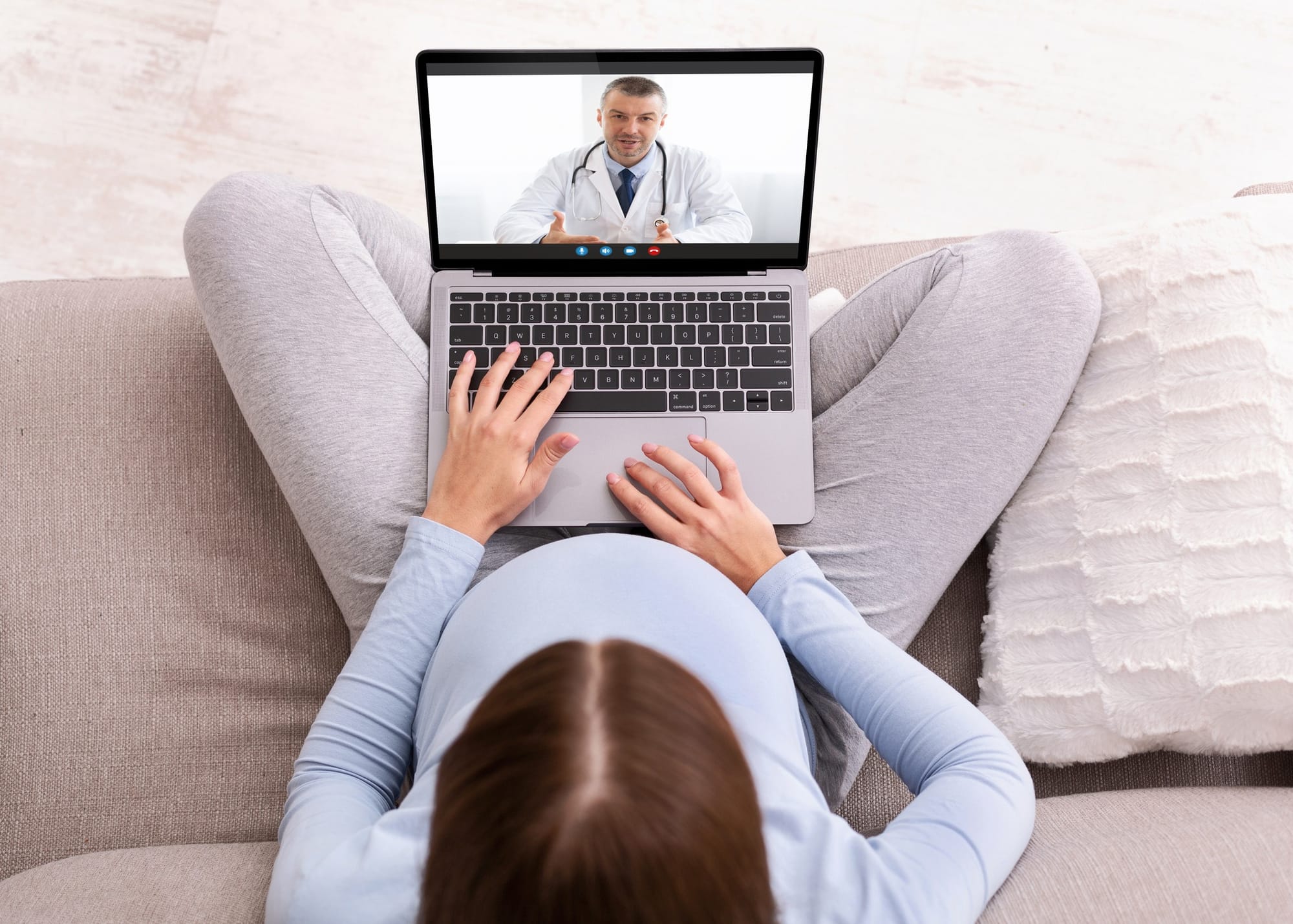
In March 2020, Medicare Benefit Schedule (MBS) items were made available to encourage the use of telehealth in Australia in an effort to reduce community transmission of COVID-19.
It was a legislative requirement that GPs and other medical practitioners could only perform telehealth services where they had previously seen patients within the previous 12 months.
However, exemptions were made for sexual and reproductive health services, which meant that women living in rural or regional areas, vulnerable women, and women from low socioeconomic backgrounds were able to have more choices in healthcare providers when it came to contraception or abortion care.
A research letter released by Family Planning New South Wales (FPNSW) in 2021 found that for patients who used telehealth-only for a six-month period between April to September 2020, the most frequent service that was sought was contraception, followed by gynaecological problems, STDs and medical abortion.
In separate research, FPNSW also found that patients living in regional and remote areas were twice as likely to choose telehealth compared to their metropolitan counterparts if MBS-rebated services were available.
Read more: For meaningful change, telehealth services need to be accessible to all
For one young woman living in regional Victoria, knowing that telehealth for sexual and reproductive healthcare was available to her would have saved her hours of travelling.
She was seeking a medical abortion, but couldn’t find a provider local to her, so made an in-person appointment at a general practice four hours away in metropolitan Melbourne.
When she arrived at her appointment on a weekend, she was informed she had to get an ultrasound and blood tests done before medical abortion could be prescribed, none of which could be done that day.
She ended up driving home, while her attending GP called around the following Monday to seek services the woman could easily get to in her area. Through her own network, the GP was able to find another local doctor that could provide medical abortion, and was only one of two medical practitioners in the area that did so.
Read more: The struggle continues for women to access affordable, timely abortions
“Abortion services feel like a secret network,” says Dr Sonia Srinivasan, the Melbourne GP who attended to the woman. “I felt terrible that I had no more information than my patient.
“Had her first appointment been through telehealth, that would have been really advantageous. It would have been a totally different experience.”
Based in a general practice in Melbourne, more than 50% of Dr Srinivasan’s consultations are face-to-face. She prefers to see patients face-to-face, noting that patients who request a telehealth appointment may not necessarily understand the complexity of their health issue and may require hands on examining. And she believes it’s important to gauge body language and build rapport with patients, both of which are challenging through a telephone.
However, she sees the benefit for telehealth appointments for a new patient for time-critical concerns such as early medical abortion.
“I can see the advantage of organising an ultrasound and blood tests for a new patient over the phone as a first appointment, and arranging a follow-up face-to-face appointment in two-days’ time,” she says.
For Dr Srinivasan’s colleagues, most of whom are GPs who work in metropolitan areas where their services are easy to access, many don’t realise that these MBS items for sexual and reproductive health are available.
If a new patient called a clinic and requested a telehealth appointment for a sexual and reproductive health issue, it’s likely they would either be asked to attend the appointment face-to-face as a new patient, or deemed to be ineligible for an MBS-rebate.
These MBS-rebates have been used by GPs based at Clinic 66, a general practice that specialises in sexual and reproductive healthcare in Chatswood, Sydney, to provide their patients with the healthcare they need.
Four years ago, with the closure of the Tabbot Foundation, Clinic 66 set up a telehealth service to provide women who were seeking abortion services a choice in healthcare providers.
Prior to the COVID-19 pandemic, costs for women seeking abortion services via telehealth were significant, and uptake was low, as telehealth was not covered by MBS.
After MBS items were introduced, and the exemptions were in place, there was a steep increase in women seeking abortion services through telehealth from all over Australia, especially for those who weren’t able to get suitable healthcare in their own community.
Most telehealth appointments are done over video, to establish rapport, and to provide for non-verbal cues that may not be picked up over the phone.
“Women call us all the time,” says Dr Emma Boulton, Director at Clinic 66. “They say: ‘I went to see my local GP, and they didn’t want to help me.’”
Telehealth allows them to make decisions in the privacy of their own homes, and have medication delivered to them through a courier if needed. Doctors go through the process thoroughly with the patients, who are also provided with written and video instructions, as well as a risk management plan.
Dr Boulton does acknowledge there are downsides to telehealth for medical abortion. While Clinic 66 would not be able to provide physical help for women living far away from the clinic if a complication arose, they can advise a patient to ensure they are within a two-hour drive from a health provider, and can help the woman navigate her local health network, and direct her to a hospital that is willing to provide support.
Aside from abortion care, women across all age groups from all over Australia and all walks of life use Clinic 66’s telehealth services to ask about contraception advice, antenatal care or perinatal preparation, menopause concerns, or even test for STDs.
“Many women [who use telehealth for medical abortion] are on the pill, or other inappropriate forms of contraception, because they don’t have a doctor that has knowledge of LARC [long-acting reversible contraception].
“We do a lot of contraception counselling, and while we aren’t able to insert a LARC, we are able to help a patient find a local inserter.” Says Dr Boulton.
By removing the exemption whereby patients need to have an existing relationship with a GP, 80-90 % of Clinic 66’s telehealth patients may not be able to access their sexual and reproductive health services due to cost.
Women most at risk if these MBS items are unavailable are not just those living in remote and regional areas. Victims of domestic abuse, young women who may not have a regular GP, and disabled women who may not want their regular doctor to know, would all be affected.
These MBS items should be made permanently available, and would be another step forward in achieving health equality for those that already face multiple barriers to healthcare.





